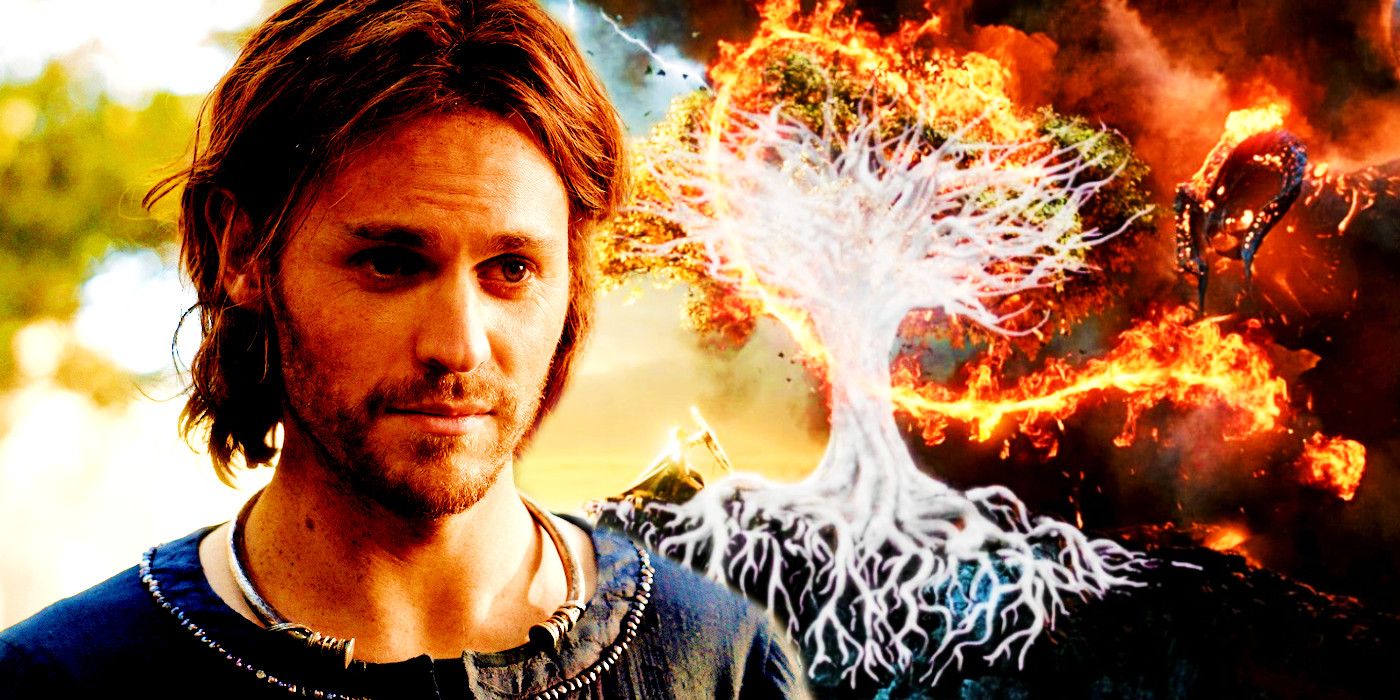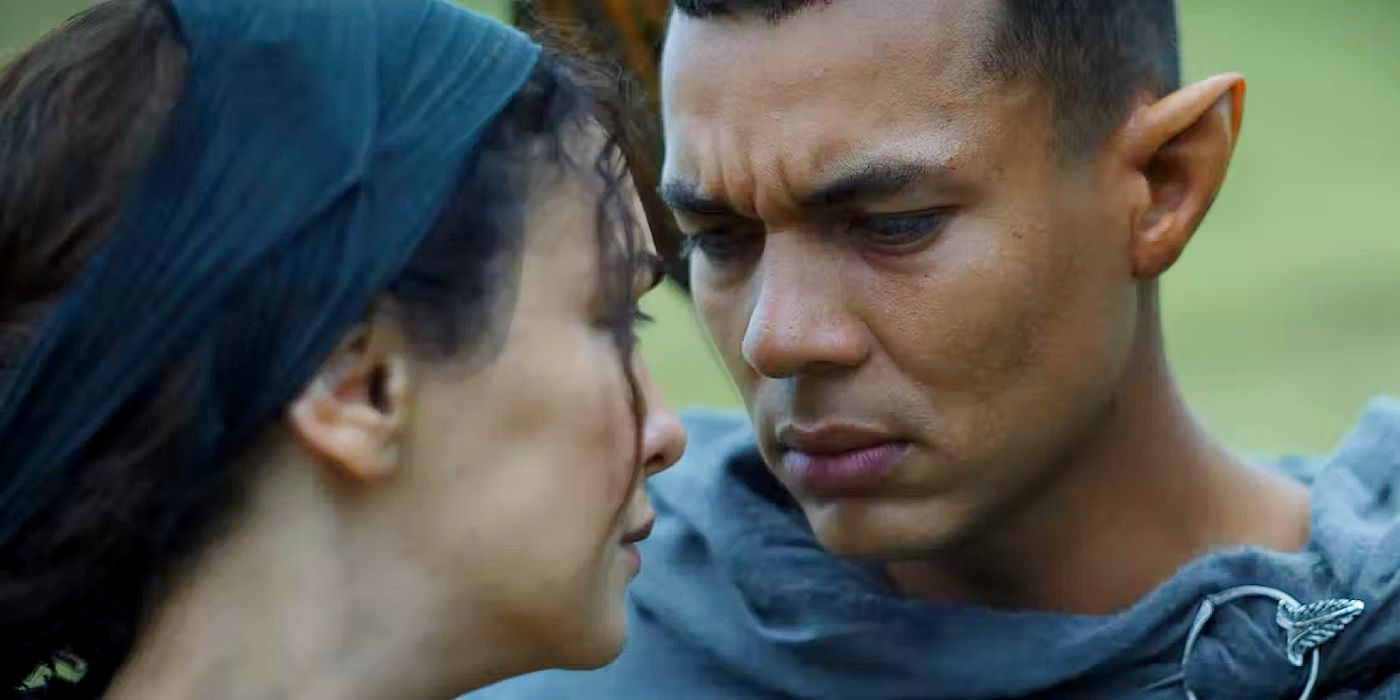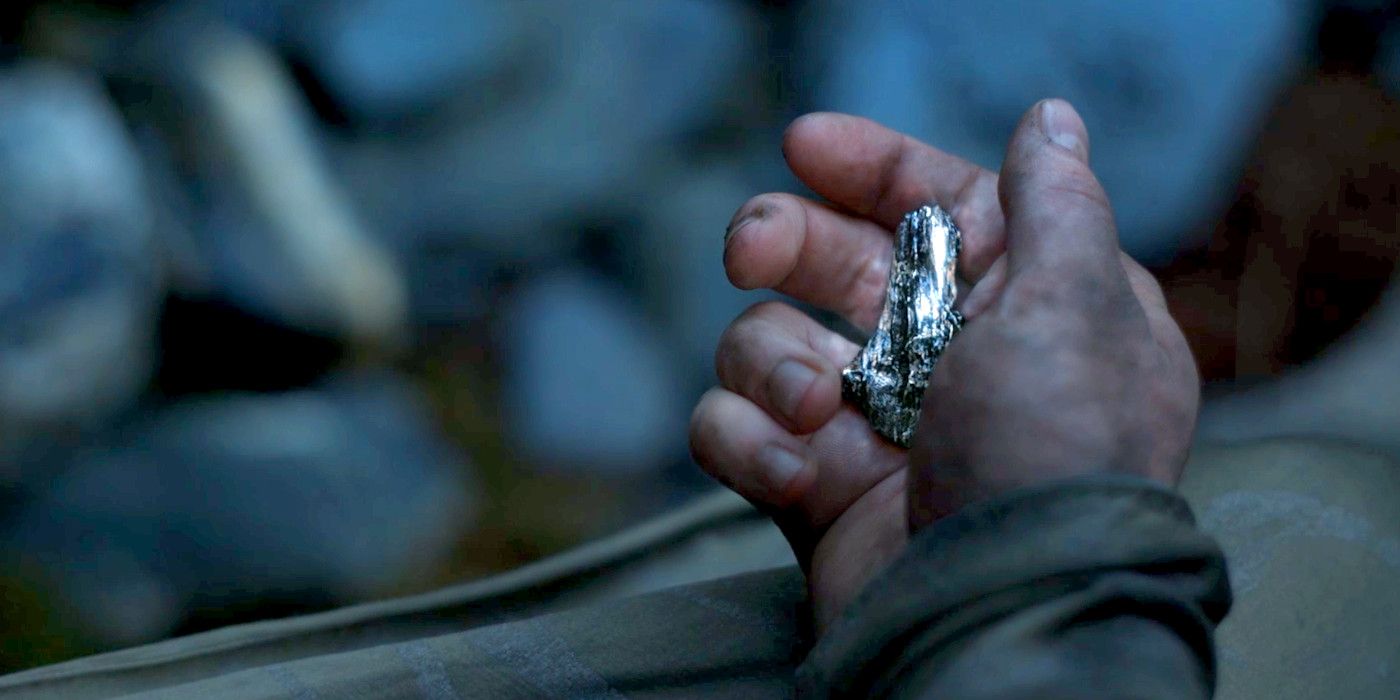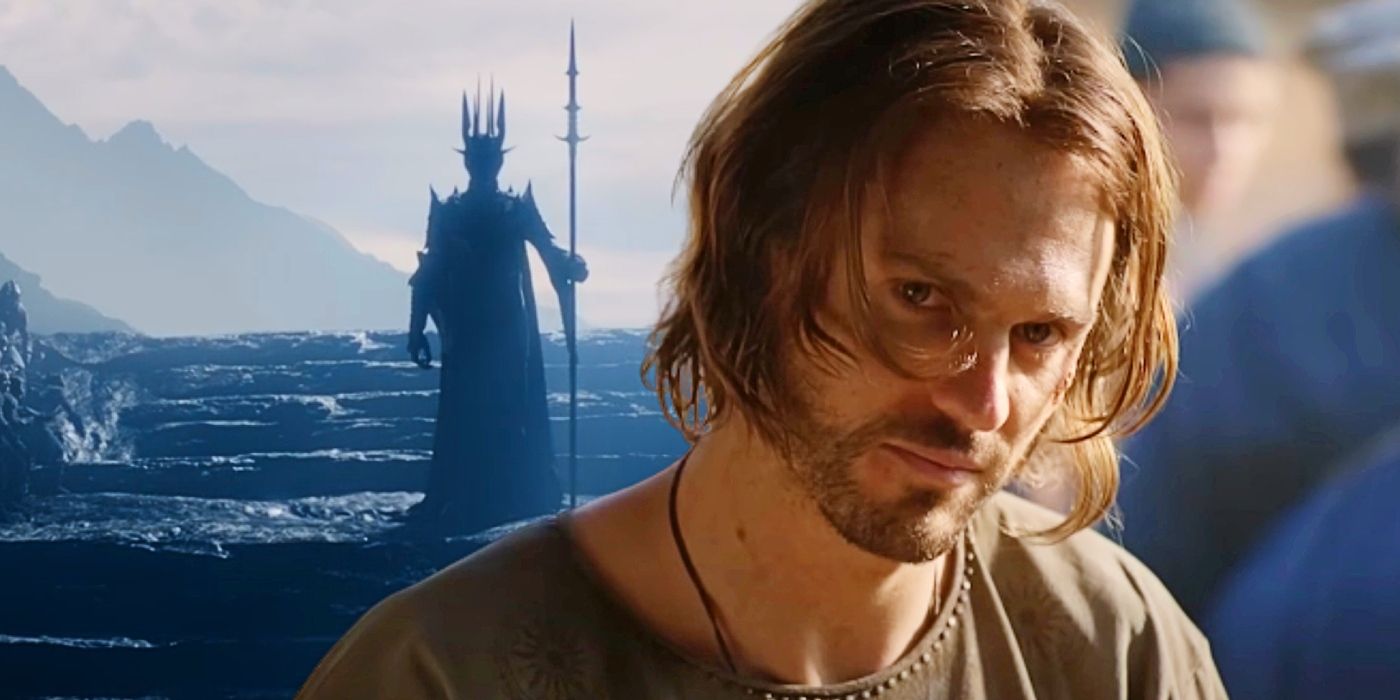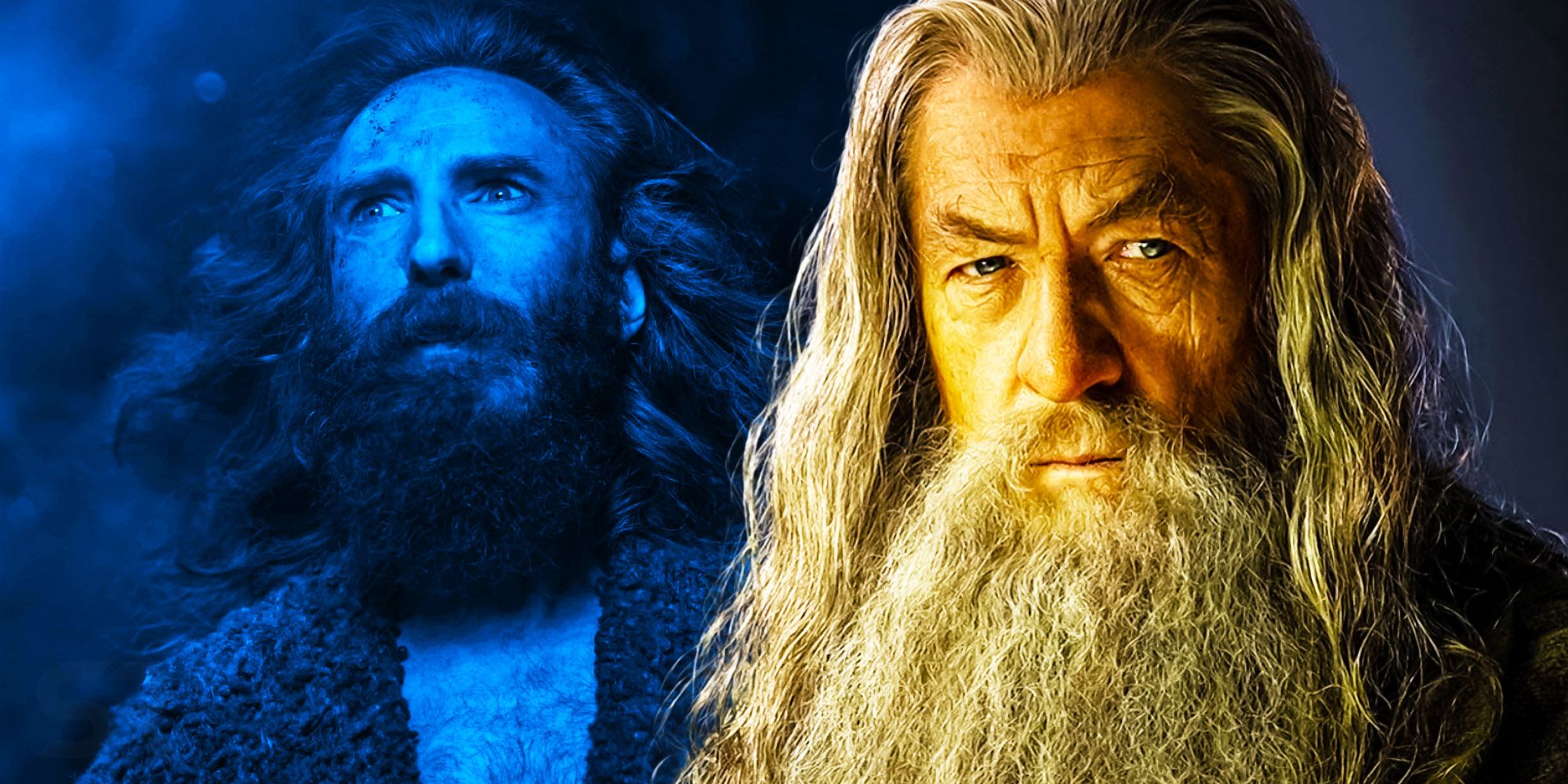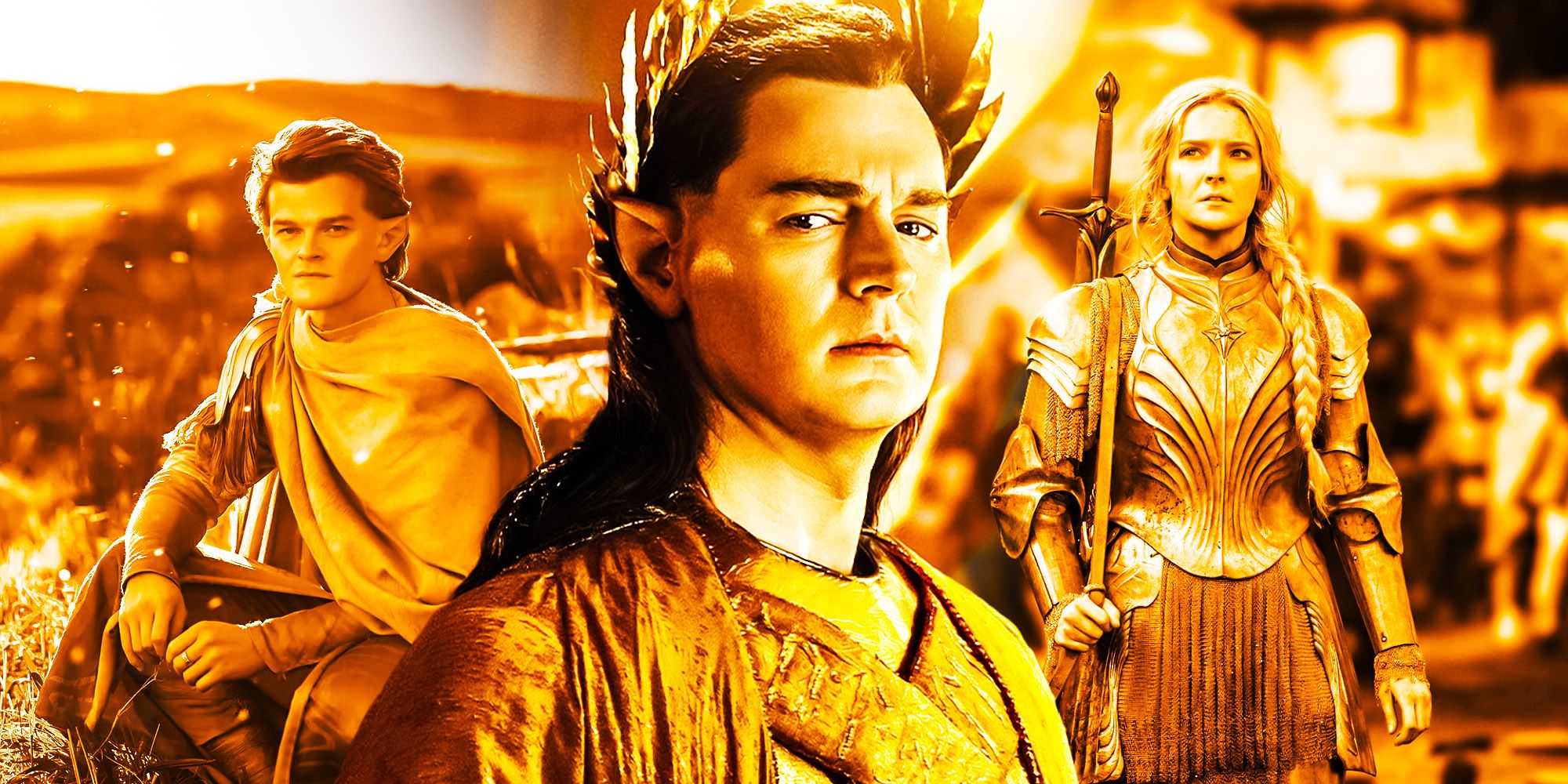The Lord of the Rings: The Rings of Power season 1 took on the arduous task of adapting Tolkien’s writings on the Second Age of Middle-earth, and some significant changes were made to the lore. The Second Age broadly concerns Sauron’s quest for power in Middle-earth after the defeat of his master Morgoth, the cultural and geographical development of Middle-earth as a whole, as well as the creation of the infamous rings of power that would change the course of Middle-earth’s history and determine Frodo Baggins’ fate in The Lord of the Rings later in the Third Age.
The showrunners of The Rings of Power have taken on a difficult task – though certain parts of The Lord of the Rings' Second Age are well known, others are much more elusive and less extensively explored than the history of the First Age, for example. Additionally, the Second Age spans thousands of years, meaning that The Rings of Power’s writers need to condense millennia of history into a mere 50 hours of television. As a result, and to tell a cohesive story suitable for the streaming age, The Rings of Power invented new characters and put its own twist on certain aspects of Tolkien’s mythology. Some of these changes to The Lord of the Rings' lore can be traced back to notes made by Tolkien himself, while others are much more obvious and will significantly impact the story of the Second Age as imagined by Middle-earth’s original creator. Here is a rundown of all the major changes Lord of the Rings: The Rings of Power made to established lore in season 1, and how they may yet impact the story as Tolkien envisioned it.
The Rings Of Power Introduced Many Original Characters
Despite the plethora of characters that Tolkien created in his histories of Middle-earth, The Lord of the Rings: The Rings of Power still saw fit to introduce a handful of new characters with significance to the story. These original characters’ additions are not entirely surprising – creating links between certain scenes, settings, and plotlines sometimes require new characters to make those connections work, especially in a show with a timeline as vast as The Rings of Power.
The most notable new characters include the elf Arondir, and all the prominent Southlanders, including Arondir’s love interest Bronwyn and her son, Theo. Though this little family played an important role in The Rings of Power season 1’s story, they are absent from Tolkien’s writings of the Second Age. Including Arondir and Bronwyn’s romance is quite a big deviation from the lore in Tolkien’s books – there are only three other established human-elf romantic relationships within The Lord of the Rings, each historically significant, so it will be interesting to see how Arondir and Bronwyn’s romance will develop and if it will have the same sort of impact as the relationship between Beren and Lúthien, for example, or Aragorn and Arwen.
Along with the Southlanders, the addition of Adar is a significant deviation from Tolkien’s writing as well, though it is clear that they’ve based his origin as an Uruk on Tolkien’s musings on how The Lord of the Rings' Orcs were created by Morgoth as part of an experiment in corrupting elves. Adar’s relationship with Sauron, however, and his claim that he killed him could have a massive impact on Sauron’s established history within Middle-earth’s lore, something the show has already been tinkering with in including Halbrand as one of Sauron’s many personas.
Other new characters include Durin IV’s wife Disa, a pleasant addition to The Rings of Power’s cast of dwarves, but her inclusion within the show is unlikely to have any significant impact on the established history of the dwarves in the Second Age. There are several new characters in the Númenor storyline too, including Elendil’s daughter Eärien, as well as Pharazôn’s son Kemen, whose existence changes quite a lot of what we know about Pharazôn’s character. His background within the history of Middle-earth involved forcing his cousin, The Rings of Power’s Queen-Regent Miriel, to be his bride to seize the throne of Númenor. Kemen may have been added to change Pharazôn’s ruthless ambition and backstory into something slightly more palatable for the modern audience, though with the current success of House of the Dragon, one might question whether that change was wholly necessary. In addition, the Harfoot characters are all new to Tolkien's world as well.
The Rings Of Power Changed The Origin Of Mithril (And The History Of The Silmarils)
The most obvious and impactful change to Tolkien’s lore in The Lord of the Rings: The Rings of Power is the alteration of mithril’s properties and its use within season 1. In the books, mithril is a valuable ore, capable of being made into light yet extremely durable armor and weaponry (Frodo’s life is saved by mithril in The Lord of the Rings: The Fellowship of the Ring). In fact, the discovery of mithril eventually leads to Khazad-dûm's downfall, as the dwarves become greedy for more and dig too deep, waking up a deadly Balrog in the process – the show has already teased this confrontation, though as of right now it is much too early in the timeline.
In The Rings of Power season 1, however, mithril has been given similar properties to those of the Silmarils, giving it the power to save the lives of the elves before their light fades forever. The Silmarils were three jewels created by the elven smith Fëanor in an attempt to capture the beauty and light of the two trees of Valinor. He succeeded, and thus instigated one of the bloodiest chapters of Middle-earth’s history, as Sauron’s master Morgoth coveted the jewels and stole them before fleeing to Middle-earth. As The Rings of Power tells it, one Silmaril eventually ended up in a tree atop Khazad-dûm (which also inadvertently changes the history of the jewels themselves), and a battle between a Balrog, presumably Durin’s bane, and an elf (likely a son of Fëanor), along with a well-timed lightning strike, allowed the power of the Silmaril and the forces of good and evil to move through the roots of the tree into the mountain, creating mithril.
This entirely new mythology has some links to Tolkien’s original writings, though those links are strained, at best. The idea that the Light of the Eldar is fading comes from The Lord of the Rings, where the elves have started migrating back to Valinor because they can feel themselves diminishing. This “fading of the light” was not as literal as The Rings of Power would have audiences believe, but rather a more natural progression to the Age of Men. Audiences will have to wait for The Rings of Power season 2 to find out more about how mithril might save the elves, though the shot of Elrond’s small piece of the ore healing a leaf from one of the infected trees in Lindon would suggest that all the elves’ problems are about to be solved, allowing them to stay in Middle-earth and help in the inevitable war against Sauron.
The Rings Of Power Revealed Halbrand Is Sauron (Without Mentioning Annatar)
Halbrand (an entirely new creation for The Rings of Power) being one of Sauron’s deceiving personas significantly changes aspects of the story of the Second Age, including the forging of the rings of power themselves. In the books, Sauron enters Eregion as Annatar, charming his way into the hearts of the elves and eventually convincing Celebrimbor to forge several rings of power. Interestingly enough, the source material posits that High King Gil-galad is most wary of Annatar’s sway, whereas, in the show, it is Galadriel who realizes that Halbrand has been misleading her all along. Her close relationship with Halbrand/Sauron is also a newly imagined storyline for The Rings of Power, though it does go some way to explain why Sauron has always been wary and afraid of Galadriel’s power as Tolkien described in the books.
Though The Rings of Power certainly shows that Halbrand had a hand in the eventual forging of the three elven rings of power, it seems to be more of a coincidence than anything else – though it is plausible that he knew Galadriel would take him to Eregion where he might meet Celebrimbor. Halbrand may have given Celebrimbor the idea for how to maximize the usefulness of the mithril ore, but that’s as far as his input goes into the creation of these famed pieces of jewelry. Perhaps, in The Rings of Power, Halbrand/Sauron will discover that the elves created these three rings of power and be inspired to make more (originally, the elven rings were the last to be made) but that would also change the important aspect of Tolkien’s lore that states that Sauron was unaware that the elves had created three rings for themselves, which gave them the power to discover that Sauron had deceived them and forged the One Ring in secret.
Now that Galadriel already knows that Halbrand is Sauron's secret identity, it’s unlikely that he’ll be able to come back to Eregion any time soon and convince Celebrimbor to fashion the other rings of power as well. The reason that the name Annatar couldn’t be used in The Rings of Power so far seems to be because it is never mentioned in The Lord of the Rings appendices, which is what Amazon has the rights to. Now that season 1 has concluded, new deals may be made with the Tolkien estate that would allow The Rings of Power to use this most important facet of Sauron’s character after all.
The Arrival Of The Istari In The Second Age
The Rings of Power finale finally confirmed that The Stranger is an Istar, otherwise known as a Wizard. Though many signs point to The Rings of Power’s Istar being Gandalf, this would change Middle-earth’s history quite extensively, as Gandalf and his colleague Radagast the Brown aren’t supposed to arrive in Middle-earth until the Third Age. The Stranger may be a Blue Wizard instead, either Pallandro or Alatar, which would give the show much more leeway to explore this interesting character. Tolkien never wrote much about the two Blue Wizards, just that they left for Rhûn and were intent on weakening Sauron in the East and the South. But, considering Gandalf is a much more well-known character, the show may wish to utilize him to excite those viewers who aren’t as well-versed in Tolkien’s lore, and his dialogue and relationship with The Rings of Power's Harfoots certainly point in Gandalf’s direction.
What Else Did The Rings Of Power Change?
There are quite a few more minor changes that The Rings of Power made to Tolkien’s lore as well, though they may have less impact on the story itself, or will be answered in the upcoming seasons. High King Gil-galad, for instance, has quite a lot of development to go through before he properly resembles his book counterpart. The timeline of Númenor’s downfall has also been compressed and reshuffled, Galadriel’s husband Celeborn never actually disappeared, the Palantíri cannot present visions of the future, the entire Harfoot story is newly imagined, and the Balrog beneath Khazad-dûm certainly shouldn’t be awake yet. Perhaps even more interesting is the vow that Galadriel took in memory of her brother Finrod to hunt down Sauron, something that never actually occurred in Tolkien’s The Lord of the Rings lore.
However, these changes in The Rings of Power, as well as others certain still to occur, all seem to have been made in service of telling a more condensed version of Middle-earth’s history. Some changes are more obvious and egregious than others. But, until the show has aired in its entirety, it’s impossible to truly dissect the impact of these lore changes on the overall story of Middle-earth’s Second Age in The Lord of the Rings: The Rings of Power.

